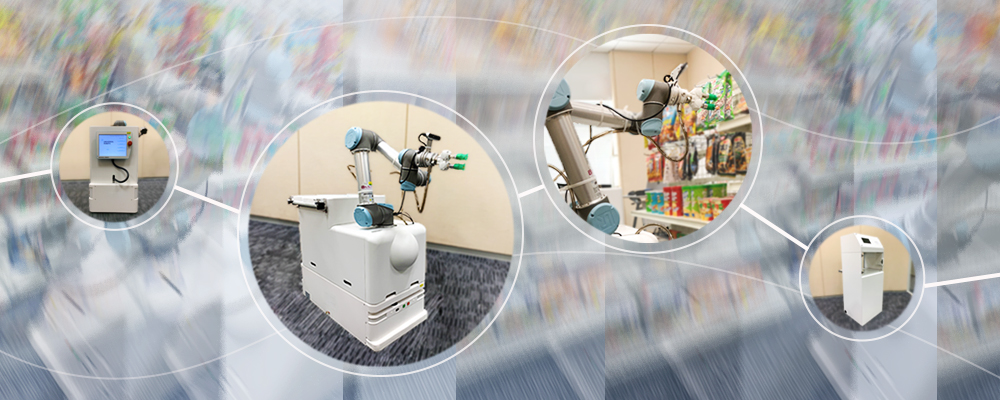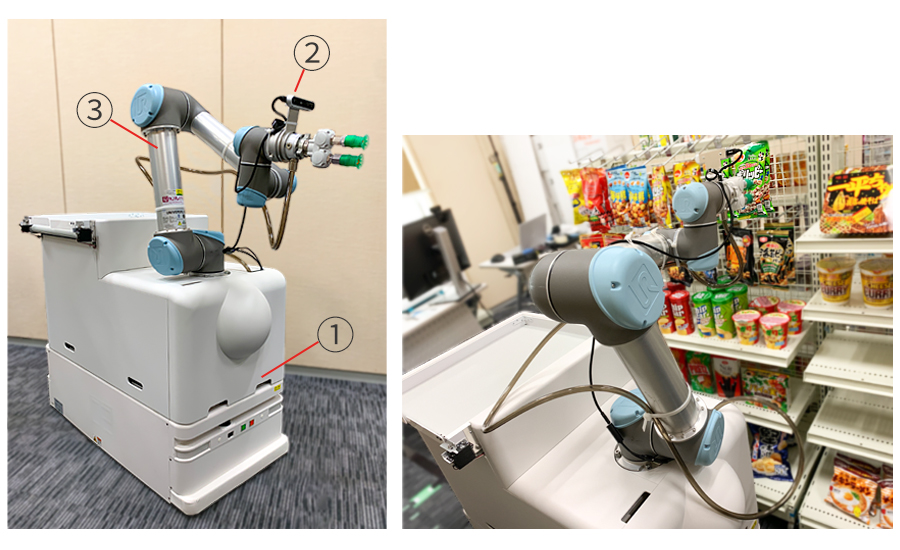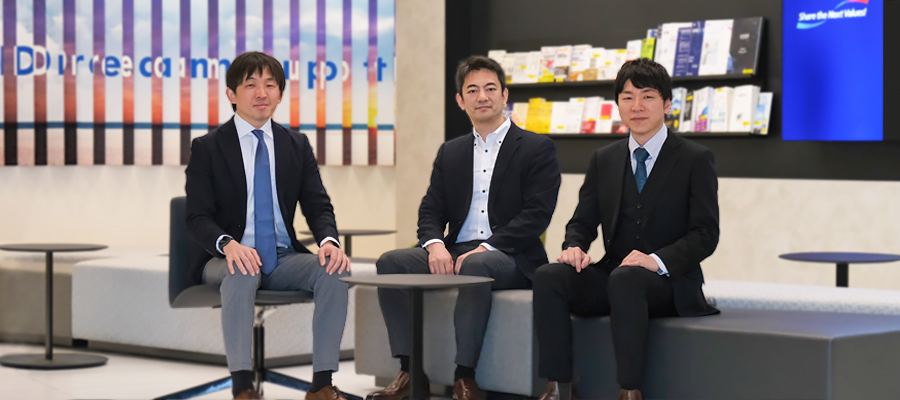
Retail Robots: The Trump Card for Solving Labor Shortages and Expanding Business Opportunities –Turning Stores into Vending Machines–
In Japan, where the birthrate is declining and the population is aging at the fastest rate in the world, it is strongly expected that labor shortages will become a major social problem. Nomura Research Institute (NRI) is conducting ongoing research on robots for unmanned retail stores as one part in the development of solutions for this problem. To take a deeper look at the project, we interviewed Kenichiro Hiroto, Haruki Shimada, and Kojiro Kato of the AI Solution Development Department, who are conducting research and development with the aim of putting retail robots into practical use in the next two to three years.
Usefulness of retail robots in Japan going forward, where serious labor shortages are a concern
With the impact of the third wave of the Covid-19 pandemic and the accompanying second state of emergency, it is likely that the number of people furloughed or unemployed has increased since the beginning of 2021. However, the number of people furloughed or unemployed around November 2020, when the “Go To Travel” campaign was being implemented during a lull in infections, had returned to a level representing an increase of 390,000 compared to December 2019, before the pandemic. In Japan, where the working-age population is declining by nearly 500,000 every year, it is expected that the labor market will become tighter when the infection rate becomes stabilized, and there are concerns that there will be a severe labor shortage after the pandemic ends.
Targeting the retail industry, where labor shortages have become apparent, NRI has been conducting ongoing research and development for robots, with the concept of turning stores into large vending machines during times when workers are unavailable, such as overnight. In an attempt to realize unmanned operation while minimizing the renovation of existing stores, the robot takes the place of a shopper walking through the store and retrieving products, and then delivers them to the shopper.
Currently, we are at the stage of working to solve some of the finer technical issues for practical use, but we believe that this robot has the potential to contribute not only to solving labor shortages but also to expanding business opportunities.
An image of retail industry robot usage, and its advantages
The image of how retail robots are used is a simple one. When a shopper orders products using a smartphone app, a robot in the store starts retrieving the products and puts the collected products into a pickup box. Shoppers simply retrieve the products from the pickup box and take them home after completing payment in advance on their smartphone or at the store. If an order is placed before coming to the store, there is no waiting time.
Many people may think of an unmanned store as a store like Amazon Go, where there is no cash register and shoppers simply pick up items from the shelves and leave to automatically complete payment. However, Amazon Go-type stores require the installation of a large number of cameras and sensors on the ceiling and shelves, so it is difficult for Amazon Go-type stores to leap forward into expansion. Meanwhile, retail robots would make flexible operations possible. For example, employees will continue to serve customers during times of high shopper traffic, and during late-night hours when manpower is insufficient, the doorway will be closed for security and a robot will handle sales, while employees can do things like stocking products for the next morning and cleaning work.
Additionally, by deploying retail robots, stores that are currently closed at night, such as drug stores and supermarkets, will be able to expand business hours at minimal cost. Another advantage of retail robots is the increased potential for turning time slots that before could only be used for backyard work into revenue opportunities.
Robot structure

-
①
AGV (Automated Guided Vehicle): A dolly that moves around the store autonomously; it carries retrieved products on its back and brings them to the pickup box
-
②
Image sensor: A sensor part that determines the exact position of an ordered product
-
③
Robot arm: An arm that grasps a product; it picks up products with the force of negative air pressure created by the two suction pads at the tip
Solving problems with AI to support the retail industry
Not only are there many types of products sold at retail stores, for example, there are often only slight differences in package design for different flavors of the same snack, the designs themselves change frequently to keep consumers from getting bored, and the packages have various shapes, sizes, and weights. Accurate recognition ability based on advanced image processing is required to correctly choose the products ordered.
Advanced control technology is also required in order to efficiently move through narrow aisles and retrieve only the desired products from among the products lined up on the shelves. In response to this challenge, we are steadily progressing down the road to practical use by making full use of the latest AI technology and incorporating the technology that NRI has cultivated so far, as well as the new knowledge gained from this initiative.
Already, there are good prospects for solving many of the generic challenges. Therefore, the next step is a phase for setting specific targets with partners and fine-tuning the technology on an individual basis. In order to actually deploy the robots in stores, the 99% success rate must be brought as close to 100% as possible. At the same time, we think it is important to try using the robots in the field first, even if the number and types of products handled are limited to some extent. Currently, we are looking for a partner to experiment together with, and we are planning an exhibit at Retailtech starting on March 9th*.
At first, deployment may take the form of employees accompanying the robots, but we want to further refine the technology and realize true unmanned operation. Eventually, we hope to support the Japanese retail industry by expanding deployment horizontally. That is our vision.
-
*
The retail robot resulting from this research and development will be exhibited at Retailtech Japan, which will be held from March 9th (Tuesday) to 12th (Friday), 2021. At the exhibition, people will be able to experience the whole process, from placing orders as users to picking up their items from a robot at a store, in a demonstration of the use of the robots in retail stores. If you are interested, please come visit us. See below for details.

Profile
-
Kenichiro Hiroto
-
Haruki Shimada
-
Kojiro Kato
* Organization names and job titles may differ from the current version.